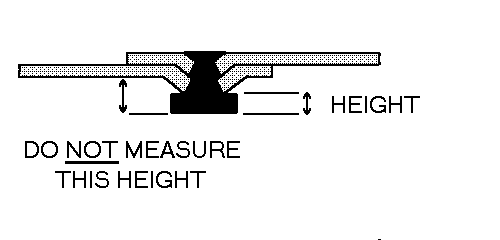Don't know how to put this into the search function so it has probably been talked about and I just can't find it. Here is the question:
Doing some practice kits again before I start to rivet skins to structure. I have a rivet guage that shows the diameter of a properly set rivet as well as a notch that if the rivet fits under, it is supposed to be the correct length. On a dimpled surface I get the correct diameter but the rivet seems too "long". I can only guess that setting the rivet against the dimple is what is casing this. Any thoughts?
Thanks
Doing some practice kits again before I start to rivet skins to structure. I have a rivet guage that shows the diameter of a properly set rivet as well as a notch that if the rivet fits under, it is supposed to be the correct length. On a dimpled surface I get the correct diameter but the rivet seems too "long". I can only guess that setting the rivet against the dimple is what is casing this. Any thoughts?
Thanks





